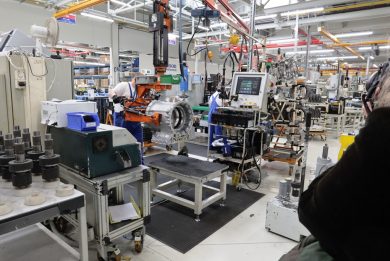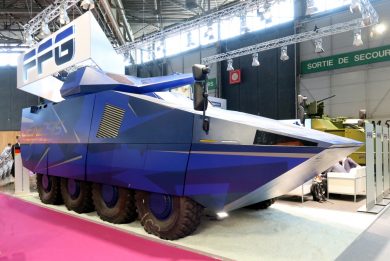
Allison Transmission: looking forward to military vehicles hybridisation
During the media event at the Allison Customer Experience Centre in Szentgotthárd, Hungary, EDR On-Line could exchange with Laurent Mazeyrac, the Account Manager, Europe Defense Tracked Vehicles on what is the company approach to hybrid propulsion, something that seems to be around the corner in the military combat vehicles world
“Allison has been busy with electrification for almost more than 20 years, when we came out with the first generator integrated inside the transmission such that the RPMs of the engine generated electricity which was used either for propulsion, charging of batteries or the generating of electricity for auxiliary equipment,” he explains.

The next step was towards electrical axles, for fully electric commercial vehicles and buses, something unapplicable to combat vehicles. “As my job is to focus on defence, the all-electric solution does not make sense for armoured vehicles at this time. It may have sense on unmanned vehicles or on purely logistic vehicles, the latter operating in-country and not in operation in the field,” Laurent Mazeyrac adds.
The Allison representative confirms that hybrid is the solution for the military, this is coming to the market in various forms, hybrid-parallel or hybrid-serial, as well as in-hub solutions.
“At Allison, we have numerous examples in trucks where E-motors are coupled to the fully automatic transmission, which generates a hybrid-parallel propulsion. This allows using the electric power of the e-machine to translate into propulsion, or use the internal combustion engine (ICE), or coupling the two, the e-machine acting as a booster,” he tells us.

“We are discussing a lot with engine manufacturers, and as we develop new hybrid solutions, we find new advantages provided by this kind of parallel systems. Last week I was in Germany talking with an engine manufacturer, and we found out that the e-machine can restart the thermal engine, should the combustion engine starting system fail, something we never thought about, which will increase reliability,” he adds.
This adds to well-known advantages of hybrid propulsion packages in terms of last mile silent movement using all-electric propulsion, on board available power for silent watch, thermal signature reduction when operating with electric power only, and fuel consumption reduction, especially on certain mission profiles.
The weight increase of many legacy vehicles due to better protection requirements and to the add on of numerous subsystems that were not present on original platforms led to considerable mass increase, the latter also adding in terms of power consumption.

“These vehicles must be repowered in terms of sheer output as well as in terms of on-board electric power availability. Shifting to a hybrid transmission, which has that capability of also delivering power to all those auxiliary equipment, is definitely the solution, therefore most of our new models for tracked vehicles that we develop have a hybrid solution,” Laurent Mazeyrac says. The hybrid-parallel architecture adopted in tracked vehicles allows delivering those cross-drive transmissions with or without the hybrid function, since the E-machine can be delivered as an option.
While in wheeled vehicles hybrid propulsion increases reliability allowing, as said, restarting the engine, as well as ensuring a limited mobility range should the ICE fail, in tracked vehicles, where cross-drive transmissions are used, hybridisation adds further vehicle and reliability improvements.
“A cross drive transmission has different functions as it not only transfers torque to the tracks, but it also ensures steering vehicle and breaking. There is no other system to break the vehicle. There is no other system to steer the vehicle. So, electrifying the transmission adds up advantages for all those functions,” Laurent Mazeyrac explains. This is obviously not true for wheeled vehicles, where steering and the braking of the vehicle is done by auxiliary mechanical systems in the vehicle, which are independent from the transmission itself.

Another advantage of Allison’s eGen ForceTM new hybrid cross drive transmission is that they smoothen the ratio of torque brought to the wheels. While in an ICE application torque usually increases with the rotation speed up to a maximum, and then decreases, in an electric machine the torque is higher and is nearly constant, so the hybrid solution allows bridging the gap, our speaker explains.
Asked about the impact of new and smart technologies on transmissions, each Allison transmission features a Transmission Control Module (TCM) where a proprietary control software is loaded. “We have different solutions to optimize fuel efficiency and power distribution through smart control and software, and our software allows the system to learn about the driver’s behaviour. So, depending on how he behaves the transmission will adapt to ensure that as much torque as possible is kept to the wheels,” Laurent Mazeyrac says.
Beside software, improving transmission efficiency and life is also a matter of materiel used and of gear design optimisation, and the company Research Centre in Indianapolis is constantly at work to boost products quality and performances, most Allison employees being engineers, Laurent Mazeyrac concludes.
Photos and images courtesy Allison Transmission and Rheinmetall



